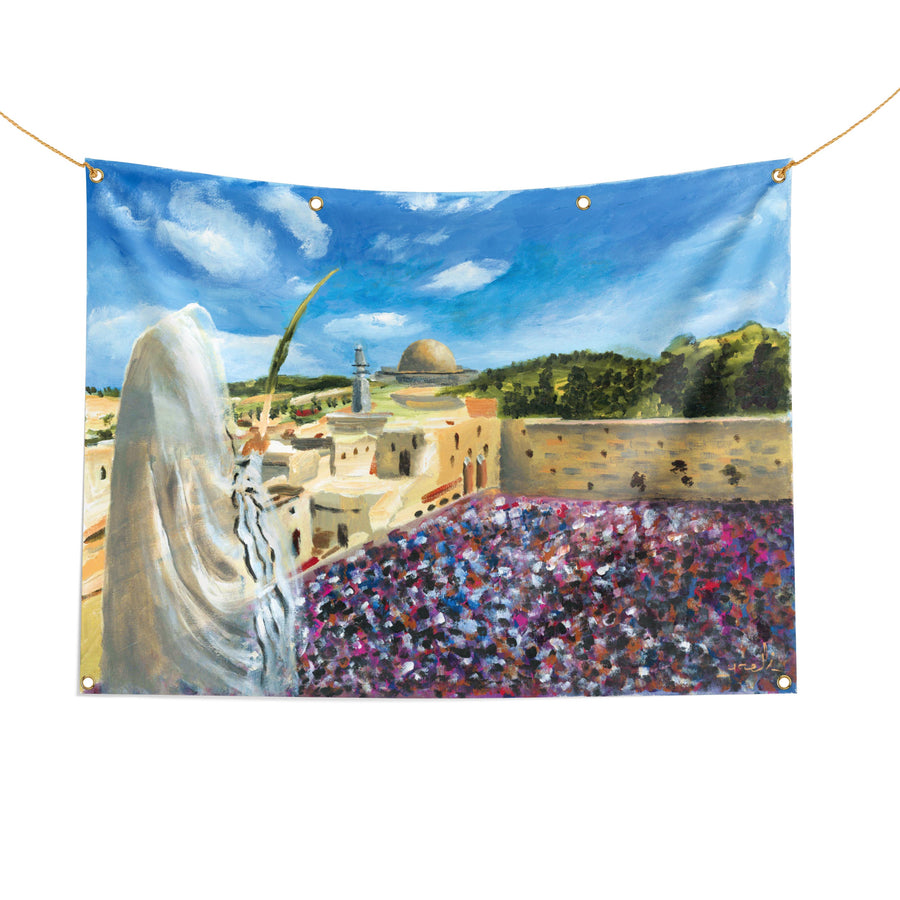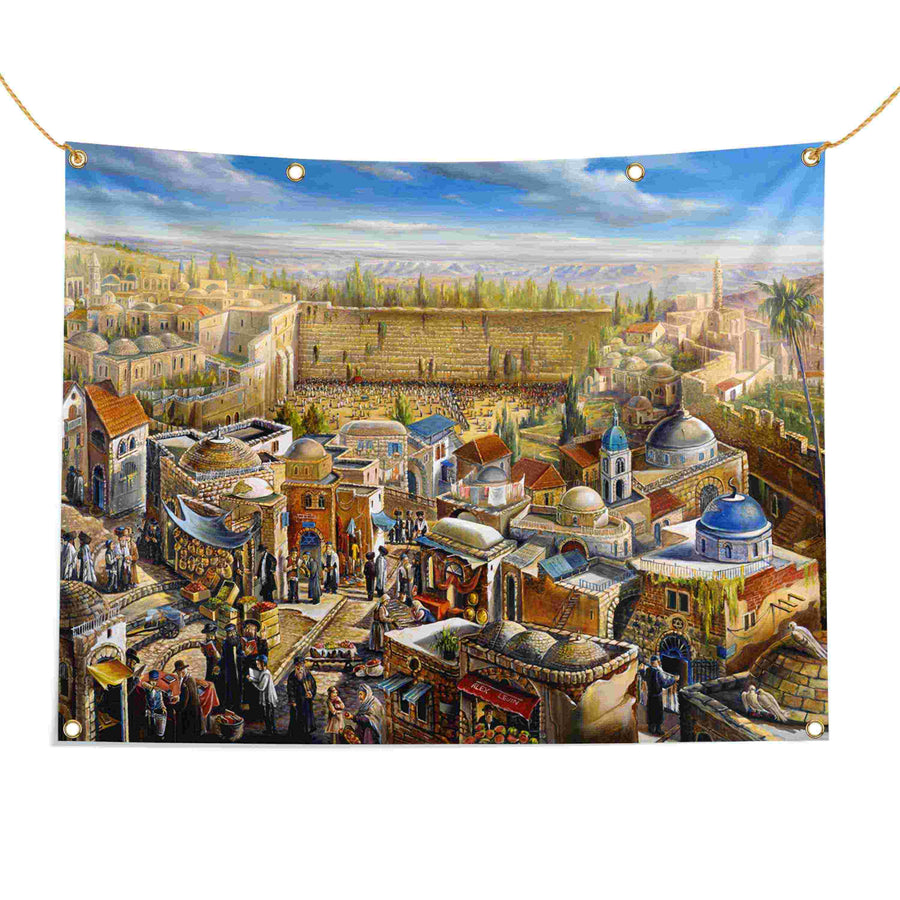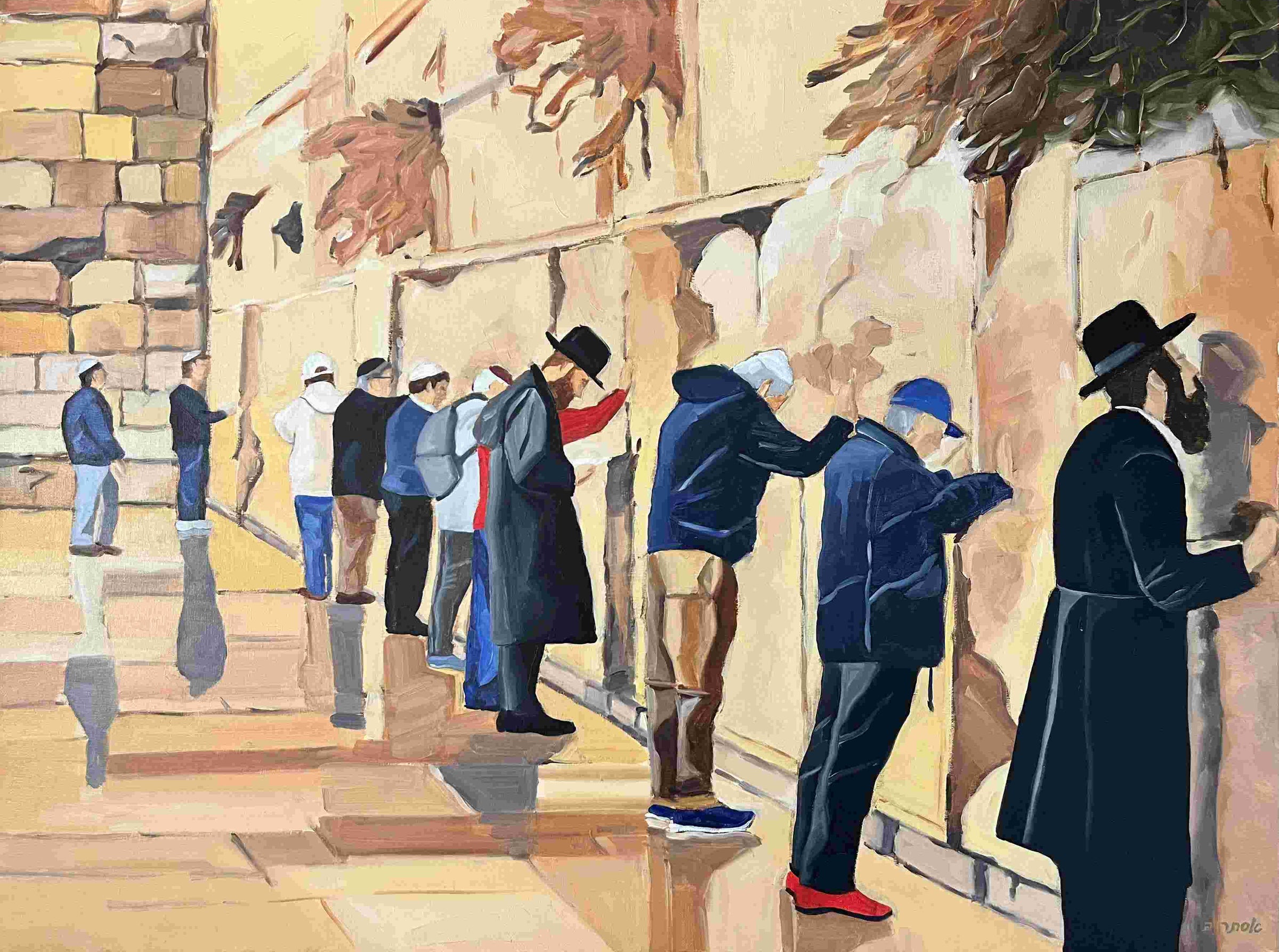

Table of contents
A Mitzvah-packed Celebration
Sukkot is the holiday that has something for everyone. Not only do we get to crack out our Sukkah Kits , ready to hang out in a cozy, temporary dwellings for eight days, but we also shake the Four Kinds ( lulav and etrog bundle) in a display of unity (more on how the Four Kinds represent unity in our article on the Four Types of Jews ). Then there’s the Beit Hamikdash (Temple) connection – seven Musaf sacrifices, the pouring of water on the Temple altar (Nisuch Hamayim), and the Simchat Beit Hashoeva (water drawing ceremony), which was basically the greatest water celebration of all time.
If that’s not enough, Sukkot has multiple identities too: in our prayers, we call it Chag HaSukkot and Z'man Simchatenu (the time of our joy), while the Talmud simply calls it Chag, and elsewhere it's known as Chag Ha’Asif, the Harvest Festival. No wonder Sukkot stands out as such a unique occasion!
What’s in a Name? Zman Simchatenu – The Time of Our Joy
Sukkot is often referred to as Zman Simchatenu, but what exactly does that mean? According to Pirkei Avot (4:1), “ Who is rich? The one who is content with what they have.” It’s not about happiness in the ‘let’s have a party’ sense; it’s a deeper state of mind – a feeling of true contentment and satisfaction. We even say in our prayers, "The heavens will be happy, and the earth will rejoice." It’s as if the heavens themselves are teaching us that simcha (joy) is more of a spiritual, heavenly thing, while the earth, with its gilah (rejoicing), grounds us in the material world.
During Sukkot , we’re encouraged to find contentment in our share and acknowledge that everything we have is a gift from G-d. It’s no coincidence that we leave the comfort of our homes, crack out our Sukkah Kits , and live in a temporary hut for eight days – it’s our way of showing that we trust G-d and are grateful for whatever He provides.
Sukkot and the Harvest: More Than Just a Festival of Sukkah Kits
Sukkot is also called Chag Ha’Asif, the Harvest Festival, because it falls right before winter, the season of hunkering down and hoping you’ve got enough to get by. Back in the day, it was a time to thank G-d for a successful harvest that would carry people through the tough months ahead. But beyond the physical harvest, there’s a spiritual lesson here too: just as the harvest sustains us, so does our connection with G-d. As we prepare for the colder, darker months, we turn to Him for the sustenance – both physical and spiritual – that we need to thrive.
The Joy of Water: Simchat Beit Hashoeva
Here’s where things get even more festive: the Simchat Beit Hashoeva . Picture the ultimate water party, complete with dancing, singing, and celebrating like you’ve never seen. Rabbi Samson Raphael Hirsch explains that the pouring of the water on the altar symbolizes pouring every ounce of our joy back into G-d’s hands. It’s our way of acknowledging that true joy comes from Him. So while it might seem like just a fun festival, there’s a deep, spiritual meaning behind the joy of the Simchat Beit Hashoeva. Learn more in our handy article about the significance of the Simchat Beit Hashoeva .
A Universal Message: The Musaf Sacrifices
One of the most unique aspects of Sukkot is the offering of the seven Musaf korbanot (additional sacrifices). These sacrifices correspond to the seventy nations of the world, highlighting that G-d is the provider for all humanity, not just the Jewish people. Unlike Pesach and Shavuot, which focus more on our personal history and redemption, Sukkot carries a universal message. It reminds us that G-d provides for every living being, as it says in Psalms, “You open Your hand and satisfy the desire of every living thing.”
During Sukkot , we have the chance to take a step back and appreciate everything we have. It’s a holiday that encourages us to find joy not in acquiring more, but in being content with what we already have – the real essence of Zman Simchatenu!












